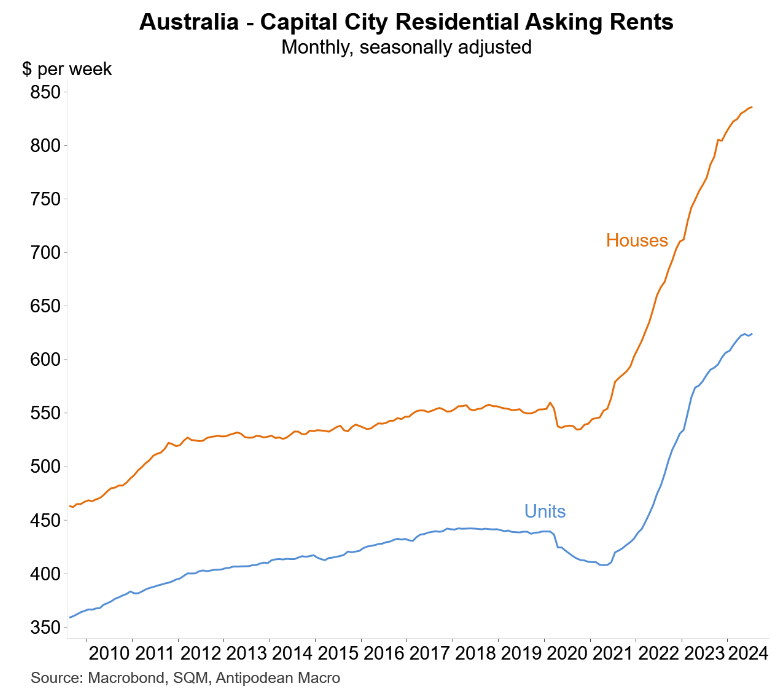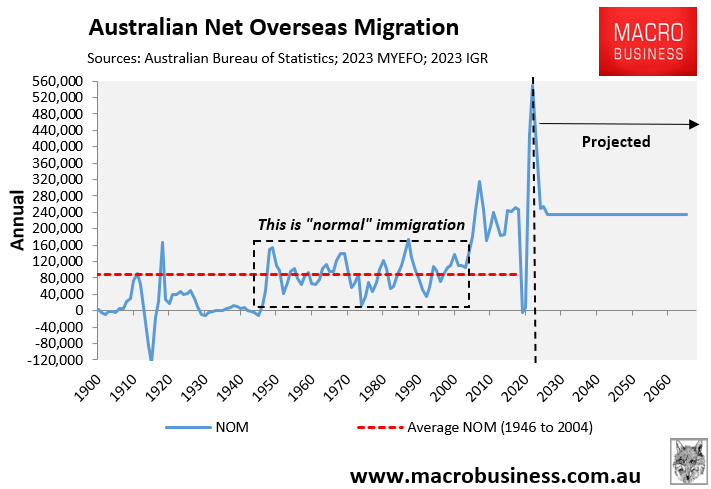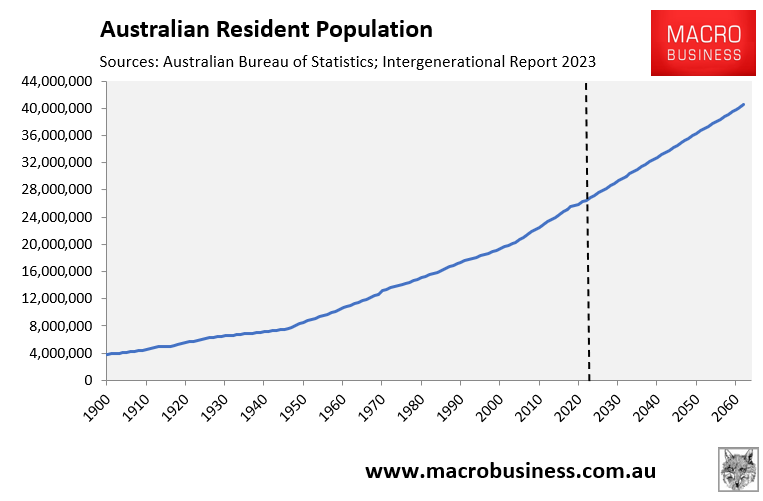“Dr Demography” Liz Allen from the Australian National University (ANU) is the go-to talking head whenever the media wants a quote about the fantastical benefits of mass immigration.
Allen loves to spin positive ‘Big Australia’ propaganda. She also likes to label anyone against excessive immigration racist or xenophobic.
A classic example of Allen’s propaganda was on display last year following the release of the Intergenerational Report (IGR).
When asked how the fabric of Australia would change following the projected 14.5 million population increase over 40 years (caused entirely by net overseas migration), Allen responded with the following word salad (my emphasis):
“I think it’s not going to unsettle anything in this country”.
“Australia is a proud migrant country. Since our early black history there was migration to this country”.
“And what we’ve learned is that migration is indeed the fabric of our economy. It’s what’s keeping this nation afloat”.
“Australia’s migration program is a very measured, skills-driven scheme”.
“Migration helps keep us economically afloat”.
“Migrants don’t inflate house prices, they don’t steal local jobs and they don’t suppress wages”.
Last month, Liz Allen again declared that immigration does not affect housing affordability:

However, after performing so much mental gymnastics, arguing that excessive levels of immigration do not negatively impact housing affordability, Liz Allen once again complained that she cannot afford to purchase a home and will retire a terrified renter:

Funny enough, the ANU’s Centre for Social Policy Research refuted Liz Allen’s assertion that immigration doesn’t affect housing affordability. It released a report in January entitled “It’s the economy (and housing), stupid: Views of Australians on the economy and the housing market in January 2024”.
In Section 9.2: Perceptions of house price change, the ANU authors wrote:
“Despite some year-to-year fluctuations brought about by recessions or exogenous shocks, house prices have gone up in Australia in both nominal and real terms”.
“The main pressure on house price increases is population growth, and this has been strong for most years due in large part to migration policy”.
The impact of high immigration on rents is even more profound.
Net overseas migration briefly turned negative over the pandemic before shooting to unprecedented levels once the international border opened:

To nobody’s surprise, rents also fell at the beginning of the pandemic before launching after the border reopened in late-2021 and record volumes of migrants poured into Australia:

Australia will forever struggle to build enough homes as long as the population grows so rapidly through net overseas migration.

Australia took 2012 years to reach a population of 19 million in 2000. However, the 2023 IGR projects that Australia’s population will reach 40.5 million by mid-2063:

That would represent a population expansion of 21.5 million (113%) in just 63 years!
Anyone with a shred of common sense understands that such rapid population growth in a relatively short period of time will have a negative impact on housing affordability, be it prices or rents.
Moreover, excessive immigration is especially detrimental to prospective first-home buyers because it:
- Lifts rents, making it harder to save a deposit.
- Raises prices, pushing home ownership further out of reach.
Liz Allen’s endless spruiking in favour of mass immigration will ensure that she retires a terrified renter.

